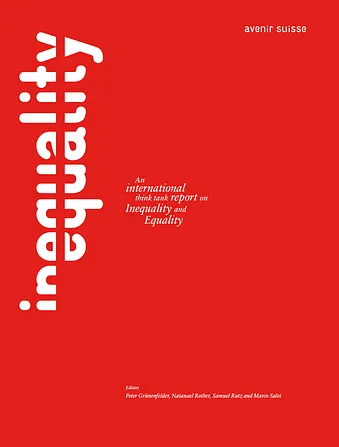This publication is the result of international teamwork at our annual Think Tank Summit, which this year covered one of the most controversial topics of today: the question of inequality. On the political level, inequality and equality have become ubiquitous topics. Reading the annual Oxfam reports, one might think our liberal economic systems are to blame for global, national and regional inequalities. Data tells a different story.
Back in 1990, 44 percent of the world population still lived in extreme poverty – compared to below 10 percent today. Such progress, thanks mainly to globalization and technological advances, cannot be overstated. Why has the question of inequality become increasingly toxic on political agendas in the West? And what are the appropriate policy conclusions? More than a dozen authors in this publication illuminate the topic from a variety of perspectives and provide important insights:
- Openness and the unhindered exchange of goods and services, capital, people and ideas remain essential for economic success and prosperity worldwide. The world needs more openness, not less.
- Inequality has many causes and depends on institutional settings. For consistent and sustainable policy proposals, country specific analysis is a must, since there are no universal solutions.
- Research indicates that one of the best, although admittedly not infallible, ways to achieve social mobility and reduce inequality is through education.
- Educational systems and labor markets are part and parcel, since the ultimate social purpose of education is to provide a workforce with the necessary skills to make a living. Countries offering “vocational” training in addition to the “standard” high school track seem to be particularly successful in channeling the young into the labor market.
- Administrative hurdles can be poisonous for employment. A flexible labor market is an import asset in supporting equality, since it facilitates the creation of income and accumulation of wealth for a broad span of society.
- In public debate, monetary policy is sometimes the scapegoat for a myriad economic problems. Central banks should not aspire to influence distributional outcomes, but focus on maintaining (or achieving) price stability. By doing so, they also act in the best interests of the less wealthy.
- The Gini coefficient is not the only measure of inequality, being hampered by taking a static perspective. Instead, it is important to adopt a long-term view and e.g. also look at social mobility. Disposable income and wealth can vary significantly over time, which is why they should be tracked at the individual level.
Several contributions to this book show that Switzerland exhibits a remarkably stable and equal income distribution and a good level of social mobility. A highly flexible labor market is at the center of Switzerland’s success. The relatively large scope provided by labor law gives entrepreneurs the flexibility required to adapt to new market circumstances. As research has shown, Switzerland has proved highly effective in preparing the young generation for entering the workforce. Finally, Switzerland differs from most countries by its unique decentralized institutional setting, combined with (semi) direct democracy. Decentralized taxation and the possibility to fine tune fiscal policy at the local level are necessary for a smoothly functioning direct democracy. Any attempts to centralize the tax system should be viewed critically.






